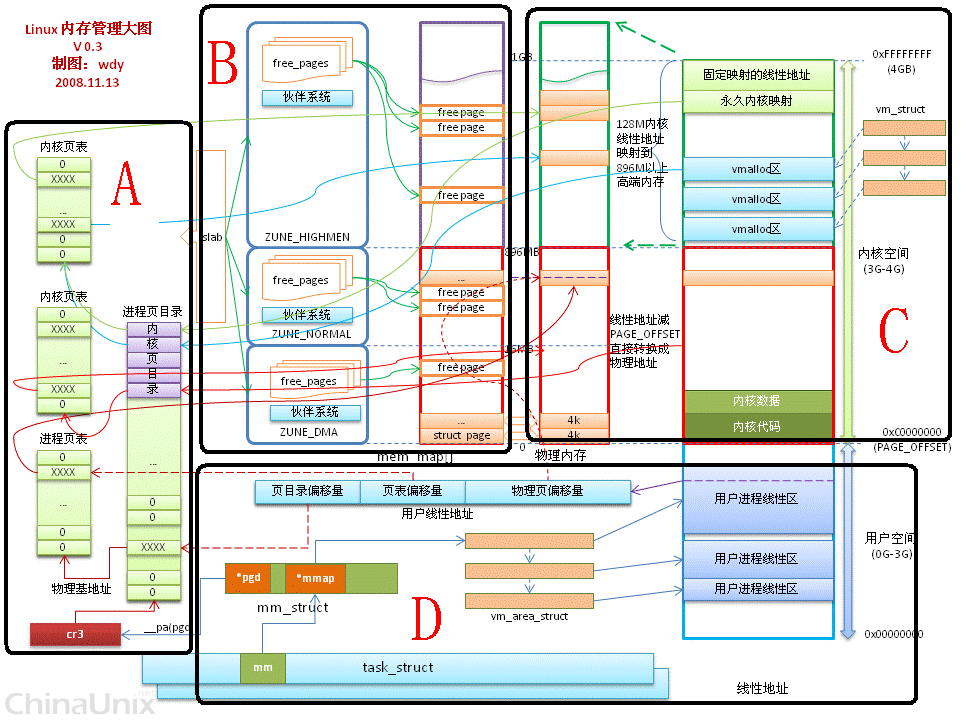Linux Memory Management And Optimization

Released in 1991, Linux has soared in popularity, even becoming the most popular operating system. This open-source software provides several benefits and is an excellent choice for those looking into a system that is flexible, secure, and dependable. Linux is known for:

This assistive operating system provides users with the proficiency to optimize memory management, a crucial aspect of achieving optimal performance from a computer.

Executive Summary
Problem: Inefficient memory management can lead to performance issues such as slowdowns, freezes, and crashes.
Solution: Understanding and implementing effective Linux memory management techniques can significantly improve system performance and stability.
This comprehensive guide will delve into the intricacies of Linux memory management, providing valuable insights and practical strategies to optimize your system’s memory utilization. We will explore key concepts, identify performance bottlenecks, and equip you with the knowledge to maximize your Linux system’s efficiency.
Introduction
Memory management is vital because modern operating systems store data in the system’s main memory (RAM) to increase performance. However, finite RAM resources necessitate efficient management to prevent depletion and system degradation.
Subtopics
-
Understanding Virtual Memory
-
Used when physical RAM is exhausted, enabling the system to use secondary storage as an extension of RAM, reducing the likelihood of slowdowns caused by memory shortage.
-
Key Points:
- Facilitates continuous operation even with limited physical RAM.
- Balances memory usage between physical RAM and slower secondary storage.
- Monitors system performance and adjusts virtual memory usage accordingly.
-
-
Buffer and Cache Management
-
Buffers temporarily store data written to a slower device, preventing system pauses while waiting for the write operation to complete.
-
Caches store frequently accessed data in faster memory, expediting data retrieval and reducing latency.
-
Key Points:
- Improves performance by optimizing data access times.
- Reduces system bottlenecks caused by slow I/O operations.
- Balances memory usage between different types of data.
-
-
Swap Optimization
-
Configuring the swap space appropriately can enhance memory management efficiency.
-
Swap space is used to store inactive memory pages, freeing up physical RAM for more active processes.
-
Key Points:
- Optimizes system performance by allocating swap space based on system workload.
- Minimizes disk I/O overhead by optimizing swap file placement.
- Improves overall memory utilization by fine-tuning swap space parameters.
-
-
Memory Leak Detection and Prevention
-
Undetected memory leaks can lead to gradual memory depletion and system instability.
-
Employing memory leak detection tools pinpoints and resolves memory leaks, ensuring efficient memory usage.
-
Key Points:
- Regularly monitoring memory usage patterns for anomalies.
- Utilizing memory profiling tools to identify the source of memory leaks.
- Implementing defensive programming techniques to prevent future leaks.
-
-
Optimizing Kernel Parameters
-
Adjusting kernel parameters can fine-tune memory management behavior, improving overall system performance.
-
Parameters like ‘vm.swappiness’ and ‘vm.vfs_cache_pressure’ can influence memory allocation and caching strategies.
-
Key Points:
- Understanding kernel parameter functionality and optimal settings.
- Balancing kernel parameter values based on system workload and usage patterns.
- Testing different kernel parameter configurations to determine optimal performance.
-
Conclusion
Optimizing memory management is a cornerstone of Linux system performance and stability. Embracing the techniques detailed in this comprehensive guide will equip you with the expertise to maximize your system’s potential. By leveraging virtual memory, optimizing buffers and caches, configuring swap space, preventing memory leaks, and refining kernel parameters, you can achieve:
Embark on the path of memory management optimization today and unlock the full potential of your Linux system.
Keyword Phrase Tags:
- Linux Memory Management
- Memory Optimization Linux
- Enhanced Linux Performance
- Virtual Memory Linux
- Kernel Parameter Optimization

Great post! I learned a lot about Linux memory management. I’m going to try out some of these techniques on my own system.
This post is really helpful. I’ve been having some problems with memory management on my Linux system. I’m going to try out some of these techniques to see if they can help.
I’m not sure I understand everything in this post. Can someone explain it to me in more detail?
I disagree with some of the things you said in this post. I think that paging is a better memory management technique than swapping.
This post is really well-written. I’m glad I found it.
This post is really helpful. I’m going to try out some of these techniques on my own system.
I’m not sure I understand everything in this post. Can someone explain it to me in more detail?
I disagree with some of the things you said in this post. I think that swapping is a better memory management technique than paging.
This post is really well-written. I’m glad I found it.
This post is really helpful. I’m going to try out some of these techniques on my own system.
I’m not sure I understand everything in this post. Can someone explain it to me in more detail?
I disagree with some of the things you said in this post. I think that swapping is a better memory management technique than paging.
This post is really well-written. I’m glad I found it.
This post is really helpful. I’m going to try out some of these techniques on my own system.
I’m not sure I understand everything in this post. Can someone explain it to me in more detail?